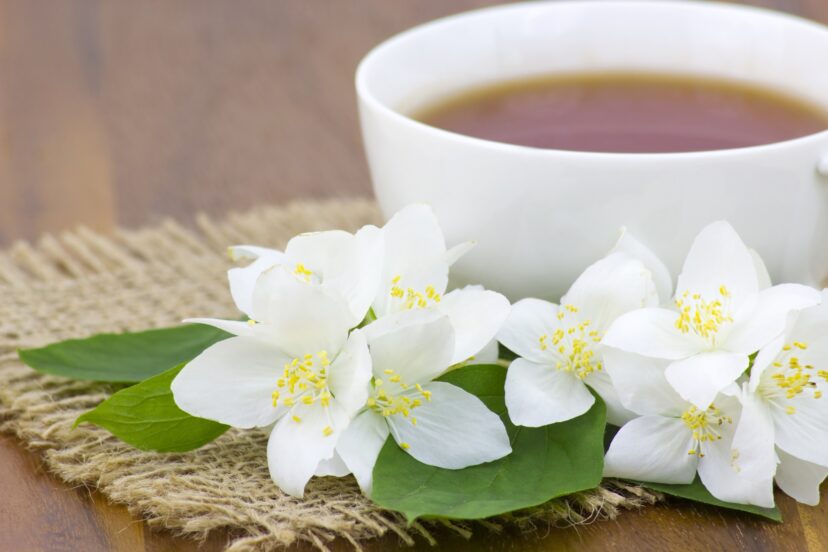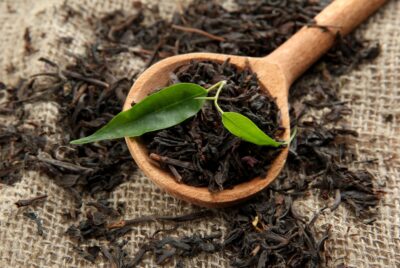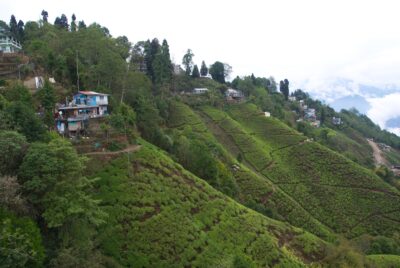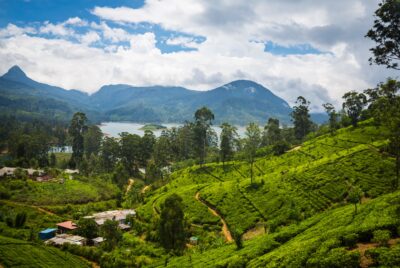Jasmine Tea: Discover the Delicate Flavor and Health Benefits
Jasmine tea combines the rich flavors of traditional tea leaves with the fragrant aroma of jasmine blossoms. Known for its delicate floral notes, it offers a unique sensory experience that is both soothing and invigorating. As an enthusiast, I can assure you that its allure lies not just in its taste but also in its rich history and health benefits.
Health Benefits of Jasmine Tea
Rich in Antioxidants
Jasmine tea is packed with antioxidants, particularly catechins, which help combat free radicals in the body. These antioxidants can reduce inflammation and lower the risk of chronic diseases.
Benefits of EGCG
One of the key antioxidants is epigallocatechin gallate (EGCG), known for its potent health benefits. EGCG has been linked to improved brain function and reduced risk of heart disease.
Aids in Weight Loss
Drinking jasmine tea can aid in weight loss by boosting metabolism and increasing fat oxidation. The combination of caffeine and catechins makes it an effective natural weight loss aid.
Promotes Heart Health
Regular consumption can promote heart health by lowering bad cholesterol levels and improving blood circulation. The antioxidants help protect the heart from oxidative stress.
How to Brew the Perfect Cup of Jasmine Tea
Choosing the Right Tea Leaves
Selecting high-quality tea leaves is crucial for brewing the perfect cup. Look for leaves that are vibrant in color and have a strong, fresh aroma.
Water Temperature and Steeping Time
For the best flavor, use water that is around 175-185°F (80-85°C). Steep the tea for 2-3 minutes, adjusting the time based on your taste preference.
Adding Sweeteners and Enhancers
While jasmine tea is delightful on its own, you can enhance its flavor with a touch of honey or a slice of lemon. However, avoid adding too much sugar, as it can overpower the delicate jasmine aroma.
Types of Jasmine Tea
Jasmine tea comes in several varieties, each offering a unique combination of flavors and aromas depending on the type of tea leaves used as the base.
Jasmine Green
The most popular variety is Jasmine Green Tea, which is created by blending green tea leaves with jasmine blossoms. This blend offers a fresh, grassy flavor balanced by the sweet floral aroma.
Jasmine White
This delicate infusion is created by scenting white tea leaves with jasmine blossoms. It offers a lighter, more subtle flavor than the green variety, with a smooth, sweet finish.
Jasmine Oolong
This variety uses partially oxidized oolong tea as the base, offering a richer, more complex flavor. The floral sweetness of jasmine complements the slightly roasted, nutty taste of oolong.
Jasmine Black
A stronger, more robust version, made by scenting black tea leaves with jasmine. The floral notes of jasmine add a touch of sweetness to the bold, malty flavor of black tea.
Jasmine Pearl
Often made with green or white tea leaves, this variety involves rolling them into small pearls before infusing with jasmine blossoms. The pearls slowly unfurl when brewed, releasing a concentrated, aromatic flavor.
Jasmine Herbal
Unlike traditional varieties that use true tea leaves, this herbal option is made by blending jasmine flowers with different herbs. This caffeine-free choice offers a purely floral experience.
Jasmine Dragon Phoenix Pearl
This premium variety is a specific type of jasmine pearl tea, where the green tea leaves are hand-rolled into small pearls and then scented with jasmine flowers. The name “Dragon Phoenix” refers to the visual elegance and the legendary Chinese creatures, symbolizing high quality. The pearls slowly unfurl in hot water, releasing a concentrated jasmine aroma.
Jasmine Silver Needle
Made from the young buds of the white tea plant, Jasmine Silver Needle tea is considered one of the highest-quality jasmine teas. The delicate silver buds are scented with jasmine flowers. This results in a tea that is light, sweet, and extraordinarily smooth, with a subtle floral aroma.
Jasmine Green Pouchong
Pouchong is a lightly oxidized tea that sits between green and oolong tea. Jasmine Pouchong combines the delicate nature of green tea with a hint of oolong’s complexity. It is often described as fragrant and lightly sweet, with a floral note that is more pronounced than in traditional jasmine green tea.
Jasmine Mao Feng
Mao Feng is a type of green tea known for its long, twisted leaves. When scented with jasmine, it has a distinctively fresh, slightly grassy flavor combined with a soft, lingering jasmine aroma. It is often less sweet and more vegetal than other jasmine teas.
Jasmine Scented Yellow
Yellow tea is a rare and lightly fermented tea with a smooth and mellow flavor. When scented with jasmine flowers, it is slightly sweet, with a soft, rounded taste and a subtle floral fragrance. The yellow tea base offers a unique, less astringent alternative to jasmine green tea.
Jasmine Kukicha
Kukicha, also known as twig tea, is made from the stems and twigs of the tea plant rather than the leaves. When scented with jasmine, it has a mild, slightly woody flavor, balanced by the floral notes of jasmine. It is low in caffeine, making it a good option for evening drinking.
Jasmine Chun Hao
Chun Hao is a high-grade variety, often made from fine green leaves. It’s known for its rich aroma and balanced flavor, blending sweet floral notes with the fresh, vegetal taste of green tea. It’s frequently served in Chinese restaurants as a premium house option.
Jasmine Yin Zhen
This is another high-quality jasmine tea made from silver needle white tea, but specifically from the Yin Zhen variety. Known for its very fine, needle-like leaves, it offers a light, delicate flavor profile with a soft, sweet jasmine aroma. It’s one of the most prized jasmine teas due to its quality and refinement.
Jasmine Sencha
Originating from Japan, Sencha combines the grassy, slightly astringent flavor of Japanese green tea with the sweet fragrance of jasmine blossoms. This variation offers a different take, with a stronger, more vegetal taste compared to the Chinese blends.
Jasmine Gunpowder
Gunpowder tea is a type of green tea where the leaves are tightly rolled into small pellets, resembling gunpowder grains. When scented with jasmine, these tightly rolled leaves slowly unfurl during brewing. This releases a robust, smoky green tea flavor balanced by the sweet floral notes of jasmine.
Jasmine Matcha
Matcha is a finely powdered green tea, traditionally used in Japanese tea ceremonies. Jasmine Matcha is made by blending high-quality matcha powder with jasmine essence or by lightly scenting the powder with jasmine flowers. This creates a vibrant, aromatic tea with the rich, umami flavor of matcha and the sweet, floral fragrance of jasmine.
Jasmine Tieguanyin
Tieguanyin is a famous Chinese oolong tea, also known as Iron Goddess of Mercy. Jasmine Tieguanyin is created by scenting these semi-oxidized oolong leaves with jasmine flowers. The result combines the complex, floral, and creamy notes of Tieguanyin with the sweet, delicate aroma of jasmine.
Jasmine Baozhong
Baozhong (or Pouchong) is a very lightly oxidized tea that falls between green and oolong tea. Jasmine Baozhong is scented with jasmine flowers, resulting in a tea that is light, fragrant, and slightly sweet, with a gentle floral aroma and a smooth, fresh taste.
Jasmine Pu-erh
Pu-erh is a type of fermented tea known for its earthy, rich flavor. When infused with jasmine, the result is a unique combination of bold, deep flavors balanced by sweet floral notes, creating a complex and harmonious experience.
Jasmine Flower
Unlike traditional blends that combine tea leaves and jasmine flowers, jasmine flower tea is made exclusively from dried blossoms. This caffeine-free herbal infusion offers a purely floral taste and aroma, making it ideal for those who prefer the jasmine flavor without tea leaves.
These varieties demonstrate the wide array of jasmine teas available, catering to diverse palates and preferences, from the lightest, most delicate teas to richer, more robust blends. Whether you’re seeking a traditional green tea base or exploring the unique flavors of oolong, white, or even fermented teas, there’s a jasmine tea to suit every taste.
Is Jasmine Tea the Same as Jasmine Green Tea
No, jasmine tea is not exactly the same as jasmine green tea. The terms are often used interchangeably due to jasmine green tea being the most common variety of jasmine tea.
Jasmine Tea
This refers to any type of tea infused with jasmine blossoms. It can be made using various tea bases, such as green, white, oolong, or black. The leaves are layered with jasmine flowers during processing, allowing them to absorb the floral fragrance. The result is a delicate, sweet, and floral aroma.
Jasmine Green Tea
This term describes any type of tea scented with jasmine blossoms. Various tea bases can be used, including green, white, oolong, or black. The leaves are layered with the flowers during processing, allowing them to absorb the floral fragrance. The result is a delicate, sweet, and aromatic brew.
Key Differences
- Base varieties can be made with different types of leaves, while jasmine green tea specifically uses green tea leaves. This distinction highlights the unique characteristics of each blend.
- Flavor and Aroma: While all varieties share the floral fragrance of jasmine, the underlying taste can vary depending on the base leaves used. For instance, jasmine green tea offers a lighter, more vegetal flavor compared to blends made with black or oolong bases.
To summarize, the term encompasses a wide range of teas that are scented with jasmine flowers. However, jasmine green tea is a distinct type in this category, specifically made with green tea leaves.
The Origin of Jasmine Tea
A Brief History
The story of jasmine tea dates back to ancient China, where it was first crafted during the Song Dynasty (960-1279 AD). The practice of scenting tea with jasmine flowers became popular due to its pleasing aroma and potential health benefits.
Jasmine Tea in Ancient China
In ancient China, jasmine tea was considered a luxury item. It was often reserved for the imperial family and served during important ceremonies. The meticulous process of harvesting jasmine flowers and tea leaves at the right time was seen as an art form.
Modern Day Production
Today, jasmine tea is produced in various regions of China, including Fujian, Jiangsu, and Zhejiang. Modern techniques have streamlined the production process, but the essence of traditional methods remains intact.
Cultural Significance of Jasmine Tea
Jasmine Tea in Chinese Culture
Jasmine tea holds a special place in Chinese culture, revered not only for its delightful flavor but also for its historical and cultural significance. Its origins can be traced back to the Song Dynasty (960–1279 AD), when the practice of scenting tea with flowers became popular. Jasmine tea, in particular, gained favor due to its sweet aroma and the belief that it could promote health and well-being.
Symbol of Hospitality and Respect
In Chinese culture, offering jasmine tea to guests is considered a sign of respect and hospitality. The tea is often served during special occasions, such as weddings, festivals, and family gatherings. The act of serving jasmine tea is more than just a gesture of politeness; it represents a cultural tradition of welcoming guests and fostering good relationships. The delicate fragrance is believed to create a calming atmosphere, making it an ideal choice for social interactions.
Tea Ceremonies
Furthermore, jasmine is an important element of traditional Chinese tea ceremonies. Although these rituals are typically associated with other varieties, like green or oolong, jasmine is frequently included for its aromatic appeal. The ceremony itself is a highly structured process, emphasizing mindfulness, respect, and appreciation. Additionally, from the careful selection of leaves to the meticulous brewing and serving, every step is performed with great attention to detail. Moreover, the gentle, soothing fragrance further enhances the ceremony’s meditative and reflective qualities, making it a truly immersive experience.
Cultural Symbolism
In addition to its role in hospitality and ceremonies, jasmine tea carries cultural symbolism in Chinese art and literature. Jasmine flowers are often associated with purity, elegance, and grace, and these qualities are transferred to the tea itself. The tea is sometimes used in Chinese literature and poetry as a metaphor for beauty and refinement. Its fragrance is likened to the delicate scent of spring flowers. Its taste is described as a harmonious blend of sweetness and subtlety.
Health and Wellness
Historically, jasmine tea was believed to have medicinal properties in Chinese traditional medicine. It was often consumed to reduce stress, improve digestion, and promote a sense of well-being. The practice of drinking this tea for health benefits continues to this day, with many people in China and around the world enjoying it for both its flavor and its reputed calming effects.
Regional Significance
Jasmine is particularly popular in the Fujian province of China, where both the flowers and tea leaves are harvested and processed. In fact, the city of Fuzhou, the capital of Fujian, is renowned for producing high-quality varieties. Additionally, the art of making this scented tea has been passed down through generations, preserving traditional methods. Interestingly, the local dialect even includes specific terms for the process, further emphasizing its deep cultural roots in the region.
In summary, jasmine tea is more than just a beverage in Chinese culture. It is a symbol of hospitality, a component of traditional ceremonies, and a reflection of cultural values such as grace and purity. Its long history and cultural significance make it a cherished part of Chinese heritage.
Culinary Uses of Jasmine Tea
Jasmine Tea in Cooking
Beyond just a beverage, jasmine tea can be used in cooking to add a unique flavor to various dishes.
Jasmine Rice
One popular use is in jasmine rice, where the tea is used to infuse the rice with a subtle floral note, enhancing its aroma and taste.
Jasmine Tea Infused Desserts
Delicious desserts can be made, such as tea-infused cakes and cookies, adding a fragrant twist to your favorite sweets.
Sourcing and Purchasing Jasmine Tea
What to Look for
When purchasing, look for high-quality leaves that are free from artificial flavors and additives. The leaves should be whole, not broken, and have a fresh, floral aroma.
Storing
Proper Storage Techniques
To maintain the freshness, store it in an airtight container away from light, heat, and moisture. This will preserve its flavor and aroma for a longer period.
Shelf Life and Expiry
For the best taste, it is recommended to consume it within six months of purchase. However it can last up to a year if stored properly.
Potential Side Effects of Jasmine Tea
Caffeine Content
Jasmine tea contains caffeine, which can cause jitteriness or insomnia in sensitive individuals. It’s important to monitor your intake, especially if you are sensitive to caffeine.
Allergic Reactions
Some people may be allergic to jasmine flowers. If you experience any allergic reactions, such as itching or swelling, discontinue use and consult a healthcare professional.
Sustainable Practices in Jasmine Tea Production
Organic Jasmine Tea
Choosing organic tea supports sustainable farming practices. It is grown without synthetic pesticides or fertilizers, making it better for both the environment and your health.
Fair Trade Practices
Fair trade tea ensures that farmers receive fair wages and work in safe conditions. Supporting fair trade products helps promote ethical practices in the tea industry.
Final Thoughts
This aromatic beverage offers a delightful blend of flavor along with numerous health benefits. Whether enjoyed as green tea with its rich antioxidants or in other variations, it provides a soothing experience that enhances well-being. Furthermore, its cultural significance, combined with its versatility in both drinking and culinary uses, makes it a valuable addition to any tea lover’s collection. By choosing high-quality, sustainably sourced varieties, you can fully appreciate both the flavor and tranquility it brings.
FAQs
What is the best time to drink Jasmine Tea?
The best time is in the afternoon or early evening. Its soothing properties make it an ideal choice for unwinding after a long day.
Can Jasmine Tea help with anxiety?
Yes. The aroma of jasmine is known to have calming effects, reducing stress and promoting relaxation.
Is Jasmine Tea good for the skin?
It is beneficial for the skin due to its high antioxidant content. It can help reduce inflammation and improve skin elasticity, giving you a healthier complexion.
How many cups of Jasmine Tea can I drink per day?
It is generally safe to drink 2-3 cups per day. However, if you are sensitive to caffeine, you may want to limit your intake.
Does Jasmine Tea contain caffeine?
Yes. The amount of caffeine varies depending on the type of tea leaves used. This is generally lower than that of coffee or black tea.




